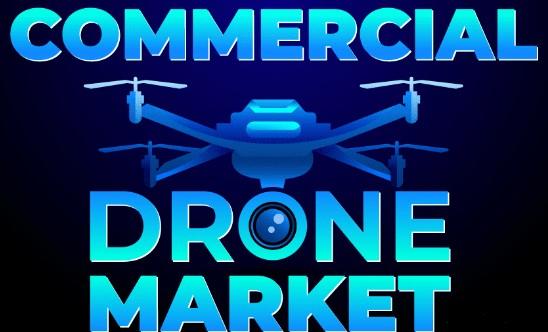The global commercial drone market growth was valued at USD 8.77 billion in 2022 and is projected to grow from USD 10.98 billion in 2023 to USD 54.81 billion by 2030, exhibiting a CAGR of 25.82% during the forecast period. Gone are the days when drones were just buzzing toys for hobbyists. Today, they’ve evolved into sophisticated machines transforming industries, saving lives, and even delivering your pizza. This is the realm of commercial drones, and their impact is undeniable.
Informational Source:
https://www.fortunebusinessinsights.com/commercial-drone-market-102171
Major Key Companies Covered in Commercial Drone Market are:
- 3D Robotics, Inc. (U.S.)
- Aeronavics Ltd. (New Zealand)
- AeroVironment Inc. (U.S.)
- Autel Robotics (China)
- Ehang Holdings Limited (China)
- FLIR Systems, Inc. (U.S.)
- Teal Drones (U.S.)
- Holy Stone (China)
- Intel Corporation (U.S.)
- AgEagle Aerial Systems Inc. (U.S.)
- Parrot Group (France)
- PrecisionHawk, Inc. (U.S.)
- Skydio, Inc. (U.S.)
- SZ DJI Technology Co., Ltd. (China)
- Yuneec Holding Ltd (China)
But what exactly are commercial drones? Simply put, they’re unmanned aerial vehicles (UAVs) designed for professional use. Unlike their recreational counterparts, they boast superior features like longer flight times, heavier payloads, and advanced sensors, making them ideal for a wide range of tasks.
Think of them as the Swiss Army knives of the sky, each with specialized tools for specific jobs:
-
Inspection eagles: Imagine a drone equipped with thermal cameras, soaring over power lines, pinpointing faulty equipment before it causes outages. Or, picture it navigating the labyrinthine tunnels of a mine, inspecting for structural damage without risking human lives. These are just two examples of how drones are revolutionizing inspection tasks in various industries, from energy to construction.
-
Eyes in the sky for public safety: Law enforcement and firefighters are increasingly utilizing drones for search and rescue operations, providing a bird’s-eye view of disaster zones and helping locate missing persons. Drones can also be equipped with loudspeakers, aiding in crowd control and communication during emergencies.
-
Precision agriculture takes flight: Forget tractors, enter the era of drone-powered farming. These drones can map fields, identify nutrient deficiencies, and even spray pesticides with pinpoint accuracy, reducing waste and optimizing crop yields. Imagine a fleet of drones autonomously planting seeds, a futuristic vision quickly becoming reality.
-
Delivery dreams take off: The convenience of drone delivery is no longer science fiction. Companies like Amazon and Domino’s are experimenting with this technology, aiming to deliver packages and pizzas directly to your doorstep. While regulatory hurdles remain, the potential for faster, more efficient deliveries is undeniable.
-
Mapping the unknown: Drones are revolutionizing the way we map the world. Equipped with high-resolution cameras and LiDAR sensors, they can capture detailed 3D models of landscapes, buildings, and even archaeological sites, providing invaluable data for urban planning, disaster relief, and historical preservation.
But the world of commercial drones isn’t without its challenges:
-
Safety concerns: Collisions with manned aircraft and privacy violations are major concerns that need to be addressed through regulations and responsible drone operation.
-
Battery limitations: Flight times are still limited by battery technology, restricting the range of certain applications.
-
Regulations and legalities: The legal landscape surrounding drone use is constantly evolving, and navigating these regulations can be complex for businesses.
Despite these challenges, the future of commercial drones is bright. As technology advances, regulations adapt, and public acceptance grows, we can expect to see even more innovative applications emerge. Imagine drones delivering medical supplies to remote areas, assisting in wildlife conservation efforts, or even performing complex construction tasks.
The possibilities are endless, and the sky is no longer the limit. With continued innovation and responsible use, commercial drones have the potential to transform the way we live, work, and interact with the world around us. So, keep your eyes on the skies, because the future of flight is taking off right now.



